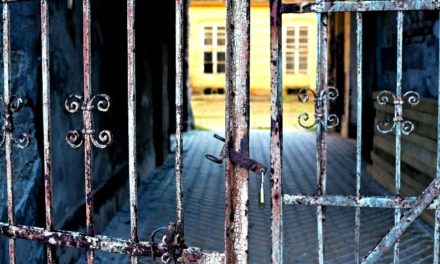"A nation that does not know its past does not understand its present, and cannot create its future!"
Europe needs Hungary... which has never let itself be defeated.
Years fraught with danger
We often mention the line in the title of Károly Kisfaludy's timeless poem Mohács, which is one of the four biggest turning points in our history. For the sake of completeness, we quote here the first lines of the poem:
"Mourning ground reddened with hero's blood, I greet you with a sigh,
the great cemetery of our national greatness, Mohács!
The gloomy Enyészt hovered with its raven wings,
And its destructive power was stormed by its fury on you,
And it burned the sign of its blind triumph with its thunderbolts here
on the corpses of our valiant army.
What were the great turning points in our history, which are connected to each of the great battles of our people's existence, rise, and destruction?
The first Battle of Bratislava took place in 907, which was the triumph of the settlement of Árpád's people in the Carpathian Basin and the recapture of the Hungarians.
The second is 1241/1242. Mongol invasion in 1950, which, although it entailed great losses, but for the second founder of the country, IV. Thanks to Béla, the foundations of a strong Hungarian Kingdom were reestablished. The third is the Battle of Mohács in 1526, which, like the previous two, aimed to exterminate our people. Mohács already resulted in the crumbling of our national existence, as the Kingdom of Hungary was split into three parts. The fourth is the Great War between 1914-1918, which led to the Trianon Dictatorship concluded in 1920. The Hungarians have not overcome this to this day. But let's go back to the 16th century.

The Habsburg Empire reached its greatest extent during the time of Charles V - who, in addition to the European territories, also ruled the huge Spanish colonial empire.
This is where the saying "The sun never sets in Charles's kingdom" comes from. France was most frightened by the power of the Habsburgs, as Austria and Spain encircled the country of Francis I (1515-1547), the "most Christian" French king. The French tried to break through the ring in the direction of Northern Italy , which areas, however, belonged to the German-Roman Empire.
The outstanding battle of the Italian Wars took place at Pavia in 1525, where the French were defeated. In 1526, the year of Mohács, the League of Cognac was established, in which Venice, Milan, Florence, the Papal States entered into an alliance with the French, and what is very unpleasant, the Ottoman Empire joined the alliance. All this happened when Hungary, defending Europe, was living its last hours against the Turks.
The powerful leaders of Europe, not knowing man or God, destroyed everything that did not serve their interests.
It is not an exaggeration that they did not even know God, because VII. Pope Clement, who, although out of wedlock, was descended from a Medici father. The Pope also made an alliance with the Turks, while paying thousands of mercenaries to help Hungary. On May 6, 1527, the mercenaries of the Christian Emperor Charles V vandalized Rome (Sacco di Roma).
Among other things, the Swiss Guards were massacred and the Pope himself was imprisoned for half a year. Meanwhile, the Reformation spread with stormy speed in the northern areas of Europe, including England, the Low Countries, Northern Germany, and the Scandinavian states. And Sweden became an entirely Lutheran country. It looked as if the kings and princes of Europe and the nobility who supported them had begun the self-liquidation of their own countries.
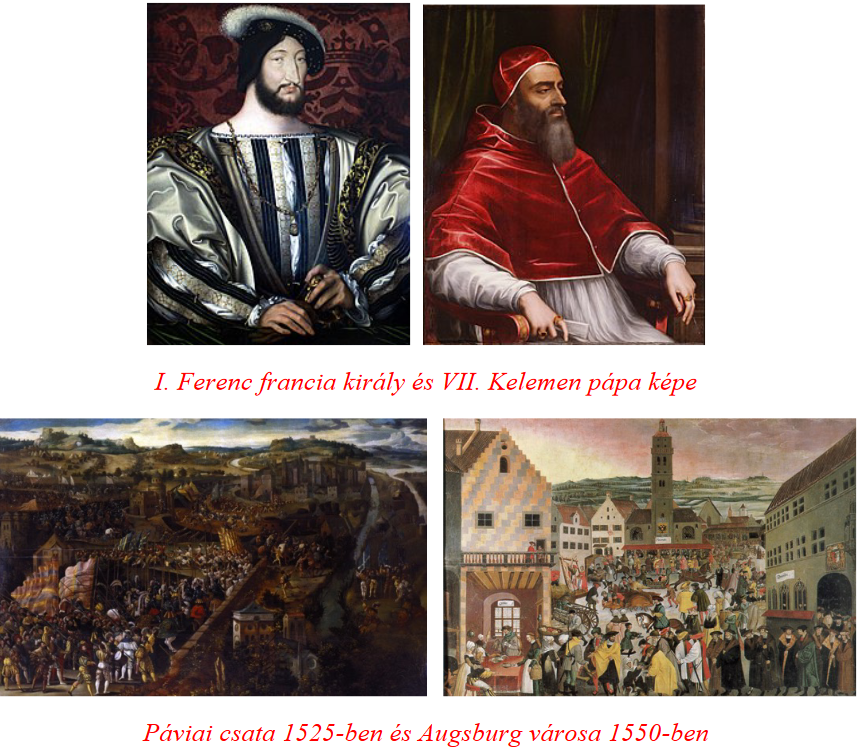
To justify what happened, it is enough to mention the decisions of the religious peace of Augsburg in 1555.
At the Imperial Assembly held in Augsburg, the Lutheran religion was made equal to the Roman Catholic religion. that, the princes were free to choose between the Lutheran (Evangelical) and Roman Catholic religions.
The essence of the principle was formulated by the phrase "cuius regio, eius religio", i.e. "whose land belongs to religion". Concretely! If the owner converted to another religion, the people living on his estate had to follow him as well. However, it should be noted that religious peace did not mean inviolability for the followers of other denominations, such as the Reformed or the Orthodox.

Hungary could not feel safe from the north either.
Another war broke out between Poland and the Teutonic Knights. This was a problem because II. King Louis himself came from the Polish Jagiellonian family, and the Grand Master of the Teutonic Knights - Albrecht of Brandenburg - was also a relative of the Hungarian king. (Remember that Louis II appointed George of Brandenburg as his chief advisor instead of István Báthori.)
Suleiman the Great declares war on Europe
The second half of the 15th century and the first half of the 16th century were the era of exceptional historical figures, artistic giants, scientists, and religious contrasts.
personality who was not European, but who had a lasting impact on the history of Europe and, among other things, on the fate of the Unlike his predecessor, Sultan Selim, Suleiman cast his net in the European territories. It is true that his predecessors had already thoroughly participated in the world-conquering efforts of the Ottoman Empire, but in Europe, the imperial aspirations of the Turks reached their peak with the conquests of Suleiman. (The historian's claim that Süleyman promised peace and rewards in return for free passage to the West has a basis. Christian Hungary did not accept this.)

In order to review Sülejmán Nagy's historical career, it is worth mentioning the "role" of that calendar day, which may be just an interesting fact. Knowing the facts, however, we used to refer to August 29 as the lucky day of the Sultan, not without reason.

Sülejmán's first significant conquest after his accession to the throne was on August 29, 1521, when Nándorfehérvár, the key to Hungary, fell into Turkish hands 65 years after Hunyadi's heroic deed. This was followed by the capture of Szábács, Zimony, Pétervárad and Szendrő. Exactly five years later, on August 29, 1526, one of the most tragic events in Hungarian history took place, the Battle of Mohács. The country was then divided into two parts. Fifteen years later, on August 29, 1541, Sülejmán captured Buda Castle, as a result of which Hungary was divided into three parts.
The process did not stop even after Sülejmán Nagy's death. The significant day should still be mentioned in connection with one of the highlighted conquests. After all, on August 29, 1602, the historical capital of Hungary, Székesfehérvár, fell into Turkish hands. Let's not pass by August 29, 1660, when Várad, the key to Transylvania, fell. However, the lucky day was coming to an end. On August 29, 1686, exactly 145 years after Buda fell into Turkish hands, the siege of Buda began. True, the siege was only successful on September 2, 1686, when the capital once again belonged to the Hungarians.
Mohács - August 29, 1526.
Sülejmán Nagy marched with an army of 60,000 people - there are still different figures regarding the numbers - to the plain (Sátorhely) along the Danube, about 8 km from Mohács.
Almost half of the Turkish forces consisted of service, non-combatant units.
Although, they also included artillery, which should be classified as combat units. The Hungarian army reached perhaps 27,000 people in total. II. In addition to the Serbs and Croats from the south, Lajos's army also included German, Bavarian, Czech, Polish, and Spanish mercenaries. A debate broke out in the Hungarian camp about whether to undertake the battle given the current balance of power, or whether to delay the clash. One of the plans proposed a retreat towards Buda. The point is that they waited for the armies led by János Szapolyai coming from Transylvania and led by Kristóf Frangepán, who was still marching near Zagreb. Aid teams also set out from the Czech Republic.
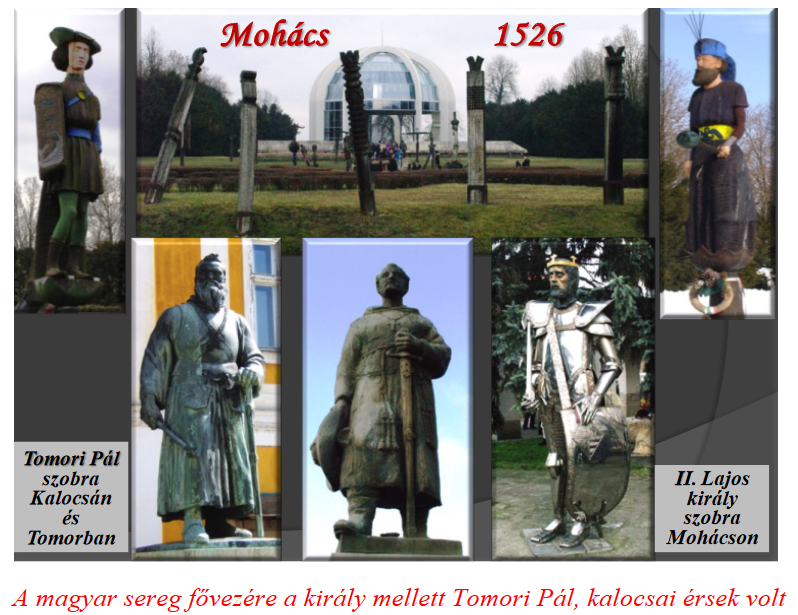
Pál Tomori and György Szapolyai decided to fight, not to wait, especially not to retreat.
After all, the Turkish army hadn't even stood up, so it would have been possible to cause more confusion in their ranks. The Hungarian army advanced to the battlefield at dawn on August 29, 1526.
On the right wing, Ferenc Batthyány commanded his 6,000 horsemen, and on the left wing, Péter Perényi waited with 3,000 horsemen to launch an attack. was the mercenary army of
about 12,000 The royal bodyguard consisted of 1,000 heavy cavalry, protected on both sides by infantry and light cavalry. It should be known that the Turkish army was equipped with modern weapons. the janissaries already used rifles, and the number of cannons was more than four times that of the Hungarians.
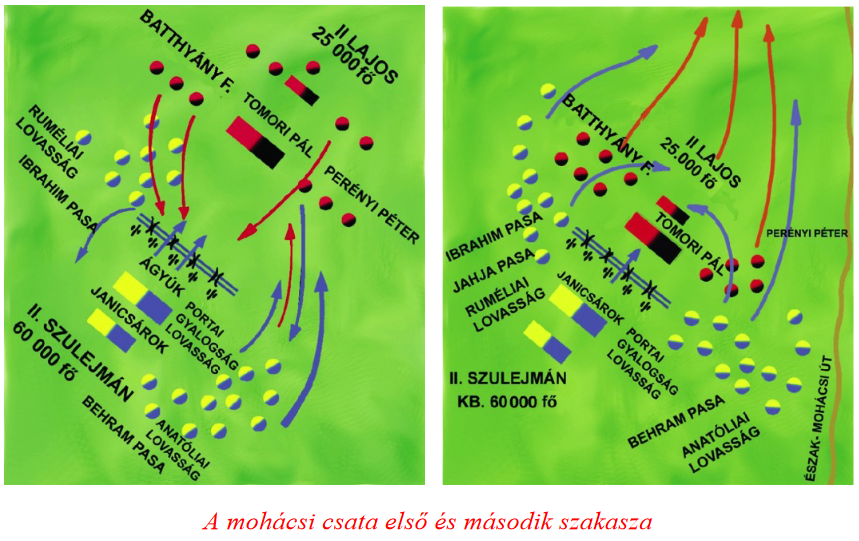 The Hungarian right wing launched the attack, and with an overwhelming cavalry charge they routed the Rumelia corps, which was still setting up camp.
The Hungarian right wing launched the attack, and with an overwhelming cavalry charge they routed the Rumelia corps, which was still setting up camp.
Unfortunately, and this points to a serious lack of leadership, the left wing remained stationary. After all, the enemy has not yet developed against them. The main army in the center, on the other hand, started, but moved more slowly than the right wing. In the meantime, the cavalry charge led by Batthyány ran out of steam, and they could have thought that they had won a victory. (Inevitably, we are reminded of the attack on the first day of the Battle of Muhi, when the cavalry of Csák Ugrin and Duke Kálmán swept away the Mongolian advance guard. The Hungarian commanders proudly retreated and went to rest. We know the rest.)
Unfortunately, Tomori realized too late the disproportionate attack resulting from the military leadership, and tried to stop the retreating, or even the counter-attacking janissaries, fleeing runners.
Pál Tomori, the commander-in-chief of the Hungarian army, was mortally wounded in this clash. (After the battle, the sultan buried Tomori's body, impaling his head on a stake in front of his tent - according to the custom of the time - to signify victory.)
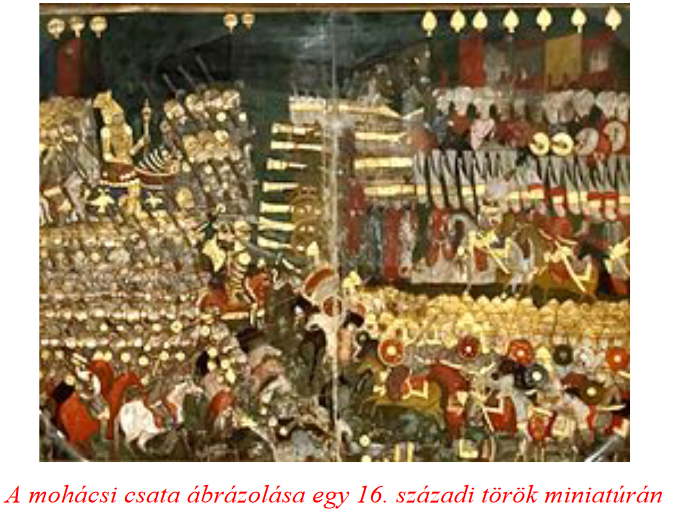
The king, 7 bishops, 28 lords, 500 nobles and more than 14,000 soldiers fell in the battle.
The cruelty of the Turks was indicated by the 3,000 severed heads after the battle, which were placed in three large piles by order of Suleiman. (We are talking about Sülejmán, for whom a memorial park was opened on the border of Szigetvár in 1994 as a sign of reconciliation, and who is "held in high esteem" on Hungarian soil to the same extent as Zrínyi. , a series of films with a "positive" sound can be seen on a Hungarian TV channel.)
Jagiellon II. The death of Louis
Among the tragic battle and its consequences, we must mention an event that must be classified as one of the black pages of our historiography serving Habsburg interests. Namely II. Finding Lajos' body. The official position discusses this important episode as that the king drowned in the swamp of the flooded Csele stream while fleeing the battlefield. (This place is marked today by a monument on the border of Mohács, which is more than ten kilometers from the battlefield.)
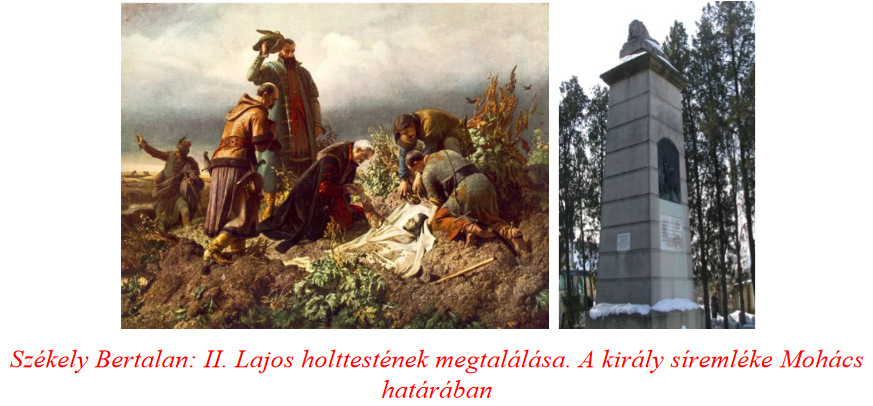
A number of questions arise.
How could a king be alone? After all, a bodyguard of a thousand men protected the king. How was it that the king, dressed in armor, was found completely naked in a freshly dug tomb? This was described by the Győr castle captain Ferenc Sárffy, the first witness to find the grave. Without multiplying other meanings leading to the world of crime fiction, it can be assumed that II. The body of Lajos was not found as depicted in the painting by Bertalan Székely, which is etched in the minds of Hungarians. But let's disregard the descriptions of the contradictory "partisan" eyewitnesses of the time. The story of the drowning in the Csele Stream is also rejected by the historians of our time who use the tools of modern research and research this topic. Professors Pál Fodor and Norbert Pap use a new, multidisciplinary /fusion of various sciences/ method to indicate that more interesting discoveries will be made in the future in this area.
The disintegration of Hungary in the 16th century
The greatest figure of the Ottoman Empire was Suleiman the Great, who wanted to conquer Europe between 1520-1566. However, Hungary's protective shield stood in the way in every case. It is indisputable that this caused enormous damage and immeasurable suffering to our people, but we could not do anything else. The 16-17. In the 19th century, the genocide and country destruction committed by the Turks led directly to the Trianon imposed on us in 1920. Western Europe, not for the first time and not for the last time, "thanked" Hungarians for their role as a protective shield. The "message" of history is that we should not ignore the political involvement of the Hungarian leadership in the 16th century. When the homeland is in danger, the individual also feels in danger, his family, property, possessions and other property. This also determines your role. It was also possible to choose in 16th-century Hungary. There were those who served the Hungarian cause even at the cost of their lives, if you like, continued the ancient Hungarian policy of the Árpáds. There were those who saw in the Habsburgs the solution for both the homeland and their own lives to turn around for the better. But there were also those who did not refuse the Turkish helping hand. This can only be accepted if we understand the political conditions of the time. Many times the Turks proved to be more "useful" allies than Vienna or Venice.
Knowing all of this, we should not excuse the - we can safely say - genderless role of the nobility of the Kingdom of Hungary at the time. (The analysis of Péter Illik and Richárd Botlik: The battle of Mohács in a different way points out several historical facts that raise the question "could it have been done differently?". Although historical science does not like this question, in this case we should not skimp on the answer .)
Because the number of those who did not appear in the battle can be put at 41,000, even though they should have been there based on Hungarian laws. In terms of weapons, 30,000 cavalry and 11,000 infantry were missing from the battle. (An army of 68,000 Hungarian soldiers would have been able to win even with faulty leadership.) For the sake of clarity, the numbers are represented with pie charts.
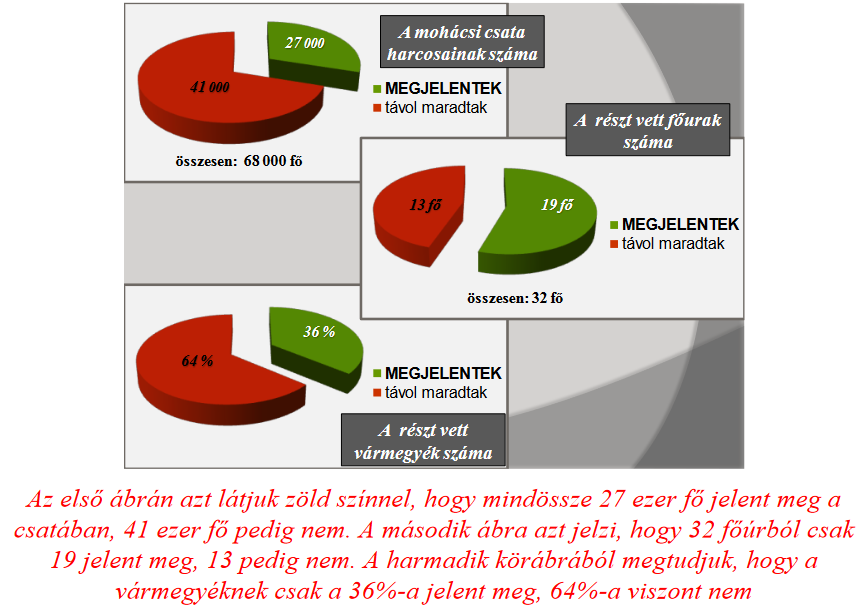
In the first figure, we see in green that only 27,000 people appeared in the battle, and 41,000 people did not. The second figure indicates that only 19 out of 32 lords appeared and 13 did not. From the third circle we learn that only 36% of the counties appeared, while 64% did not. The glorious Hungarian Kingdom of the Árpáds was split into two parts in 1526, and then into three parts in 1541. Although the Turks were expelled from the country after a century and a half, the Kingdom of Hungary did not regain its independence in the following centuries. After all, the Habsburgs already ran parallel to the Turkish rule for two hundred years, and after the expulsion of the Turks - coming to power instead of them - they robbed, killed and made Hungary miserable for another two centuries. The extermination of the Hungarians in 1526 did not end at Mohács. Undeservedly few people know the events of the Battle of Marót (September 13-15, 1526), which we refer to as the second Battle of Mohács. (It should be noted here that the historiography identifies the "second battle of Mohács" with the battle of Nagyharsány near Villány on August 12, 1687. On the Szársomlyó hill, the united Christian armies won a brilliant victory over the Ottoman armies.)
The Battle of Marót - which took place a good two weeks after Mohács - took place in the now quiet place of the Gerecse Mountains, Pusztamarót. At the news of the disaster in Mohács, a part of the Transdanubian population fled to the north with their families and their chattels. However, the huge crowd could not cross the Danube at the same time, so they built a chariot fort and awaited the Turkish attack there. About 30,000 people were stranded on the right bank of the Danube. On September 12, 1526, Sülejmán's marauding armies occupied Buda, then rampaged all the way to Győr, looting and burning everything in their path. However, they could not capture the chariot castle. Therefore, the next day, they brought cannons from Buda and shot the camp apart. The Turks slaughtered everyone, they carried out a huge slaughter. More than 20,000 Hungarians perished at Marót, more than in the Battle of Mohács. (The story known about the paintings is connected to this event. It is related to the nobleman Mihály Dobozy from Tabajd, who killed his young wife with his own hands, just so that she would not fall into the hands of the persecutors.)
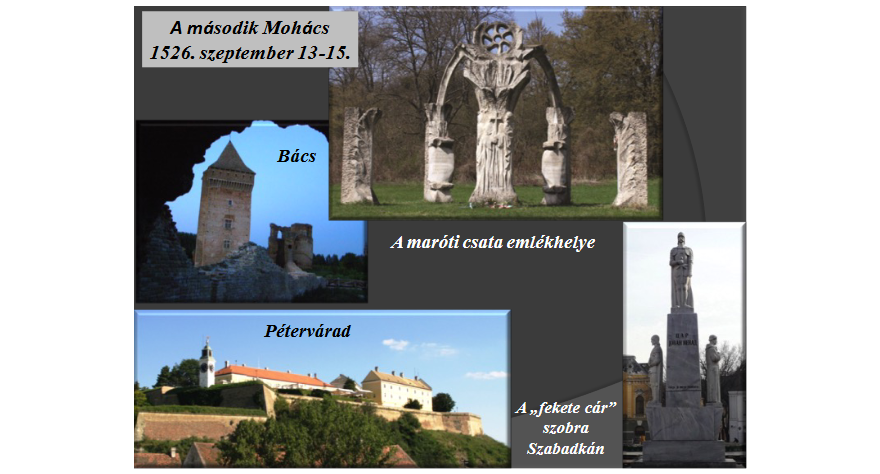

Bács defenders September 28-29, 1526.
between they showed fierce resistance against the Ottoman wars, but over time they became the prey of the Turks. During these weeks, Sülejmán's soldiers destroyed around 400,000 Hungarians in the areas between Kecskemét and Szeged, as well as in the South. Rich, populous cities, villages, estates burned to the ground. The Turks turned the country's largest productive areas into almost a desert, and then the areas between the Danube and the Tisza became uninhabited. The Battle of Pétervárad took place on October 6, 1526. The army of peasants defended the castle in the swampy area along the Danube, and caused significant losses to the Turks. With the Turks came the exterminator of Hungarians, Jovan Cserni, the "black man", as his supporters called him the "black tsar". Jovan Cserni was not a general, but rather a gang leader who exterminated and robbed his own people. Both Sülejmán and Ferdinand Habsburg used the mass murderer against the Hungarians. Today, the statue of Jovan Cserni stands in the main square of Subotica, and it celebrates the heroic Serbian general and peasant leader.
The double election of a king
Ferdinand Habsburg became the master of the western and János Szapolyai of the eastern parts of the country.
The king is dead, long live the new kings! A slight adaptation of the well-known medieval French saying "Le roi est mort, vive le roi!" i.e. "The king is dead, long live the king!" and became a catchphrase over time, resulting in a tragedy for Hungary. János Szapolyai was elected by the Hungarian Parliament in Székesfehérvár on November 11, 1526, according to the Rákos decree of 1505. On December 17, 1526, Ferdinand Habsburg was enthroned by the warring nobles in Bratislava, where the Habsburg kings were crowned for nearly four centuries. (It should be noted that upon the news of the Mohács tragedy, Louis II's wife, the young widow, Mária of Habsburg /Hungary/, did not even try to organize the defense of Buda. On the other hand, she had the trouble of loading the remaining valuables of the royal treasury onto the ships that were ready under the castle and urgently sail to Vienna. He spent the rest of his life in the Low Countries until his death in 1558. Mária was the governor of the Habsburg Low Countries between 1530 and 1555. Ferdinand's wife, Anna Jagielló, did the same. She took what she knew of treasure and value to the "new capital". to Bratislava.)

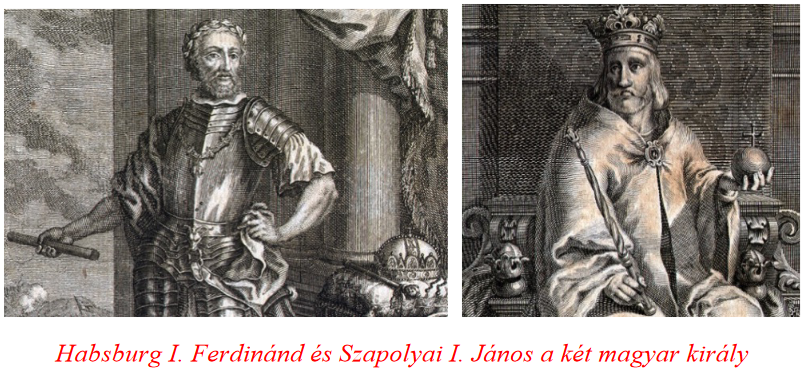 On September 8, 1526, the Turks also broke into Buda, the abandoned capital. The merciless looters broke into the royal palace, smashing all the furniture, statues and household items. They tore down the curtains, wall pictures, wall protectors, everything that seemed valuable. Sülejmán transported the remaining treasures of the palace with about 1,400 camels, including the Corvinas, the irreplaceable values of Mátyás's library. (Of the known 216 volumes, 52 are in Hungary, 41 in Vienna, and the remaining 123 copies are the estimated value of libraries and museums in 43 countries around the world.)
On September 8, 1526, the Turks also broke into Buda, the abandoned capital. The merciless looters broke into the royal palace, smashing all the furniture, statues and household items. They tore down the curtains, wall pictures, wall protectors, everything that seemed valuable. Sülejmán transported the remaining treasures of the palace with about 1,400 camels, including the Corvinas, the irreplaceable values of Mátyás's library. (Of the known 216 volumes, 52 are in Hungary, 41 in Vienna, and the remaining 123 copies are the estimated value of libraries and museums in 43 countries around the world.)
The peoples of the Carpathian Basin
Let's think about it! The nationalities were far from being affected by the extermination campaign of the Turks and the pressure of the great powers to the same extent as the ancient Hungarian population. The Tótok and Ruthenians lived in the protected valleys in the north and east of the Carpathians. They grazed their animals and lived the simple life of mountain people. They were far from the battlefields, while their population slowly increased.
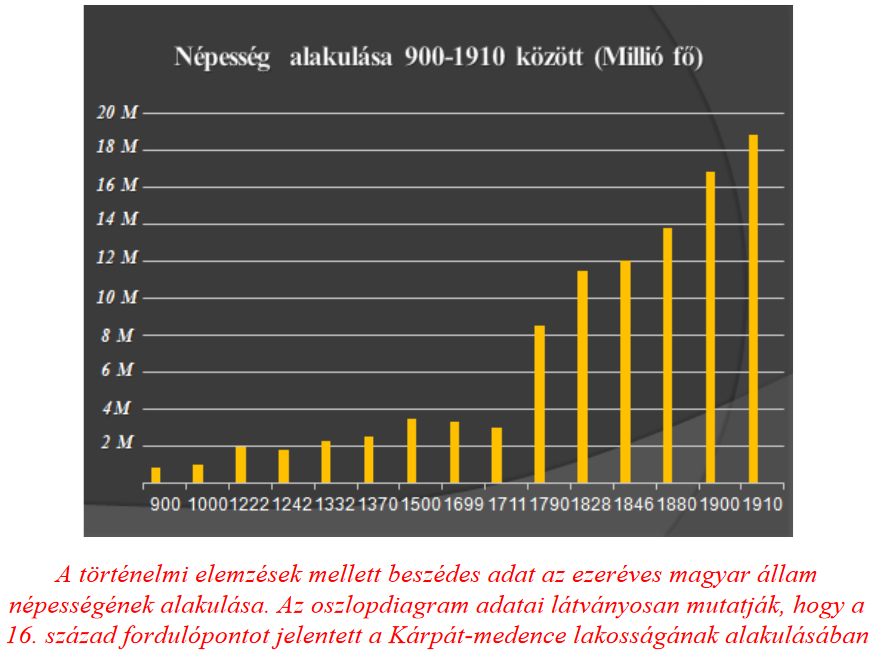 The Holach shepherds settled in the protection of the eastern and southern ranges of the Carpathians.
The Holach shepherds settled in the protection of the eastern and southern ranges of the Carpathians.
It is true that they already lived closer to the war routes of the Ottoman Empire, but there were many reasons why not as many of them perished as the Hungarian population.
One of the reasons was that they were more protected in the valleys of the high mountains than the Hungarians living in the plains, for example. The other reason is that Moldavia and the Havasalföld beyond the Carpathians - where the Olahs also lived - were already vassal states of the sultan. The third reason is that the indigenous Hungarian people felt the Carpathian Basin much more like their own, and could only imagine their life and homeland here. The predominantly Slavic peoples living in the periphery had a different attitude towards the Kingdom of Hungary.
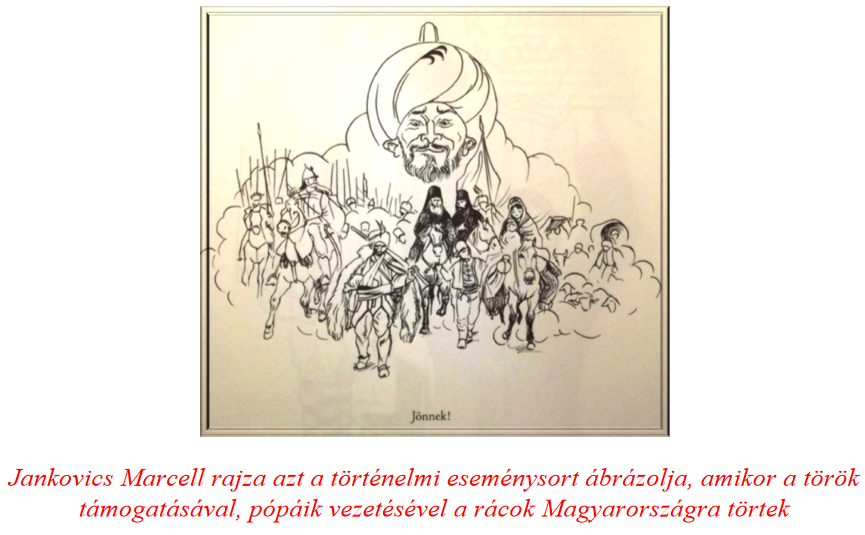 The case of the southern grids is a completely different story.
The case of the southern grids is a completely different story.
This region of the Balkans was a staging ground for Turkish and other enemy armies. The grids, depending on how their interests dictated, sometimes dressed in Turkish uniforms, sometimes represented the interests of Vienna. It was also not without precedent that among the Hungarian lords who fought against each other, they sided with the one who promised them more land or more lands. Let's not forget that along the Danube, starting from Mohács and Baja, through Ráckev and all the way to Szentendre, rác settlements were established one after the other, in which they practice their religion and culture to this day.
Nor can we ignore the fact that the religious antagonisms that erupted in these years, which expanded into religious wars after Márton Luther's action in 1517, claimed many human lives. In Hungary, especially in the eastern areas and in Transylvania, a diversity of religious denominations emerged, which showed perhaps the most diverse picture of church history in Europe.
Author: Ferenc Bánhegyi
(Caption image: YouTube screenshot)
The parts of the series published so far can be read here: 1., 2., 3., 4., 5., 6., 7., 8., 9., 10., 11., 12., 13., 14., 15., 16., 17., 18., 19., 20., 21., 22., 23., 24,, 25., 26., 27., 28., 29/1., 29/2., 30., 31., 32., 33., 34.



